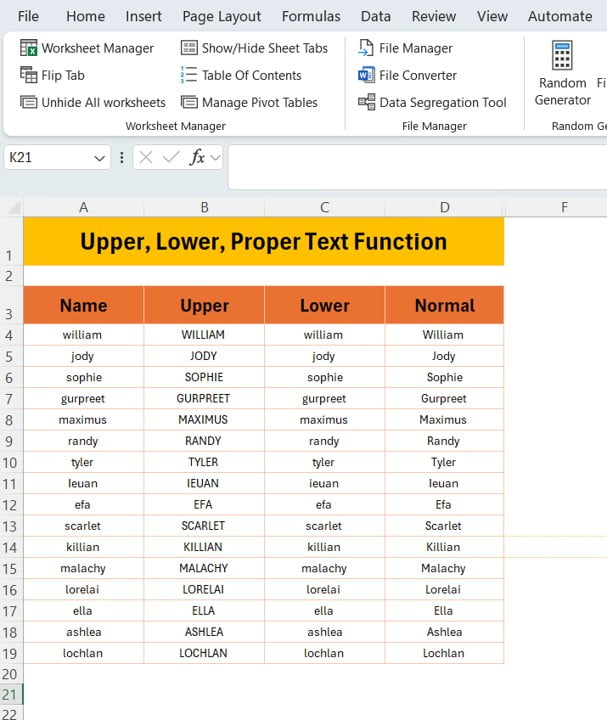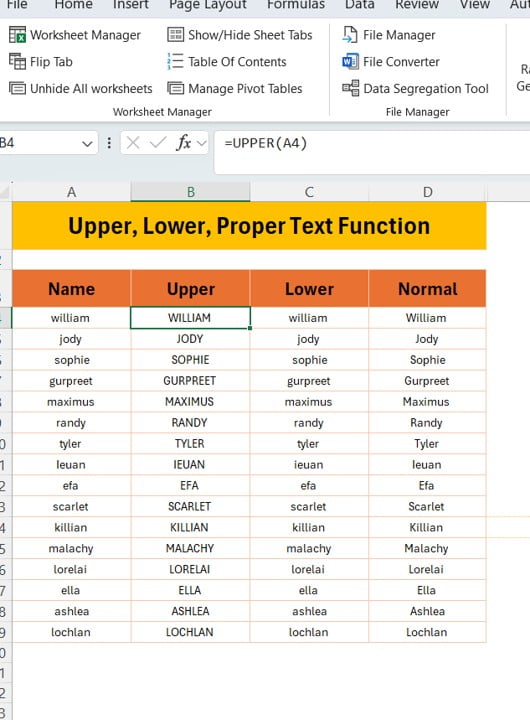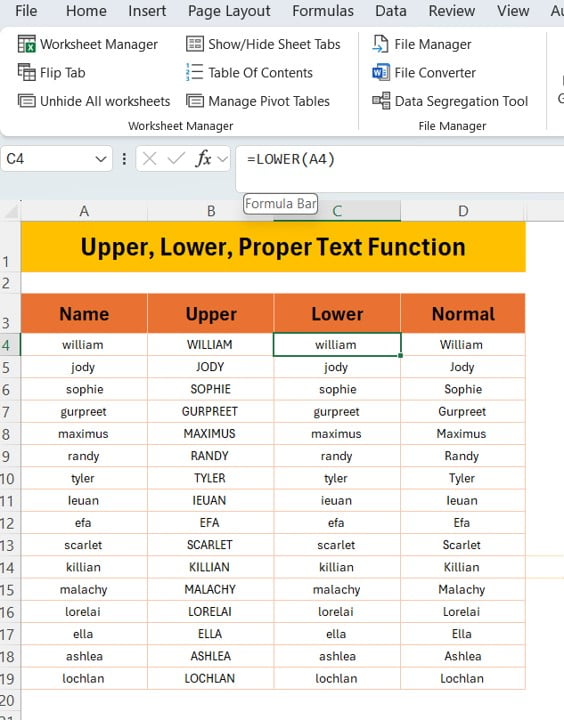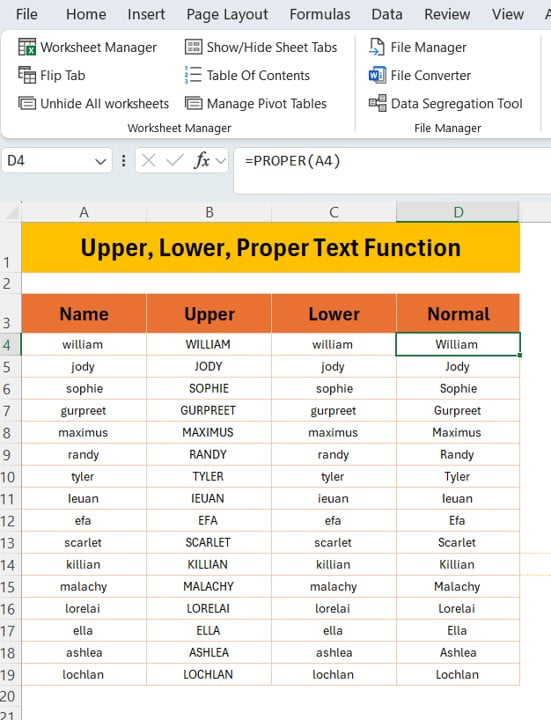Are you tired of manually converting text between upper case, Upper Lower case, or proper case in Excel? Well, you don’t need to worry anymore! In this post, we will explore how to use Upper Lower, and Proper text functions in Excel to simplify your tasks. These functions are not only time-savers but can also make your data look professional and well-organized.
Let’s dive right into it!
What Are the Upper Lower, and Proper Text Functions?

Excel provides three handy functions to change text case:
- UPPER: Converts all text to uppercase.
- LOWER: Converts all text to lowercase.
- PROPER: Capitalizes the first letter of each word, while the rest of the word remains in lowercase.
These functions come in handy when dealing with inconsistent text formatting. Whether you’re cleaning up a list of names, preparing a formal report, or just making data look cleaner, these functions can be your go-to solution.

Step-by-Step Example Using the Upper, Lower, and Proper Text Functions
Let’s say you have a list of names that are inconsistent in their formatting. Some are in lowercase, some in uppercase, and others in a random combination of cases. We’ll walk through how you can fix this with just a few simple formulas in Excel.
Here’s the dataset we’re working with:
Our goal is to ensure that each name is correctly formatted in all three cases using Excel’s text functions.
- Converting to Uppercase with UPPER Function
Let’s start by converting the names to uppercase. The UPPER function transforms every letter in the name to capital letters. The formula looks like this:
=UPPER(A4)
In this example, typing this formula into a cell will turn William into WILLIAM. It’s a quick and efficient way to standardize your data.

- Converting to Lowercase with LOWER Function
Next, we want to ensure that all names are also available in lowercase. The LOWER function helps here, turning all characters to lowercase letters. The formula is as follows:
=LOWER(A4)
This will convert William into William. Easy, right?

- Capitalizing the First Letter with PROPER Function
Lastly, if you want to capitalize only the first letter of each word and leave the remaining characters lowercase, use the PROPER function:
=PROPER(A4)
This formula will take William and convert it to William, making the name look more professional and presentable.
Final Output in Excel
After applying these functions, your data will be neatly transformed into the following format:
Name Upper Lower Proper
Why Should You Use These Text Functions?
Now that we’ve shown you how to use these functions, let’s talk about why they’re important:
- Saves Time: No need to manually edit text. You can handle large datasets quickly.
- Ensures Consistency: These functions help make your data look uniform, which is essential for professionalism.
- Easily Applied: The formulas are easy to understand and apply, even if you’re not an Excel expert.
Conclusion
The Upper, Lower, and Proper text functions in Excel are essential tools when you need to clean up text data. Whether you’re handling lists of names, product descriptions, or any other text-heavy data, these functions will save you a ton of time. With just a few simple formulas, your data can look polished and ready for presentation!
So, give these functions a try on your next Excel project and see how much time you save. Let us know in the comments if you have any questions or tips to share!
Visit our YouTube channel to learn step-by-step video tutorials
View this post on Instagram
Click hare to download the practice file



